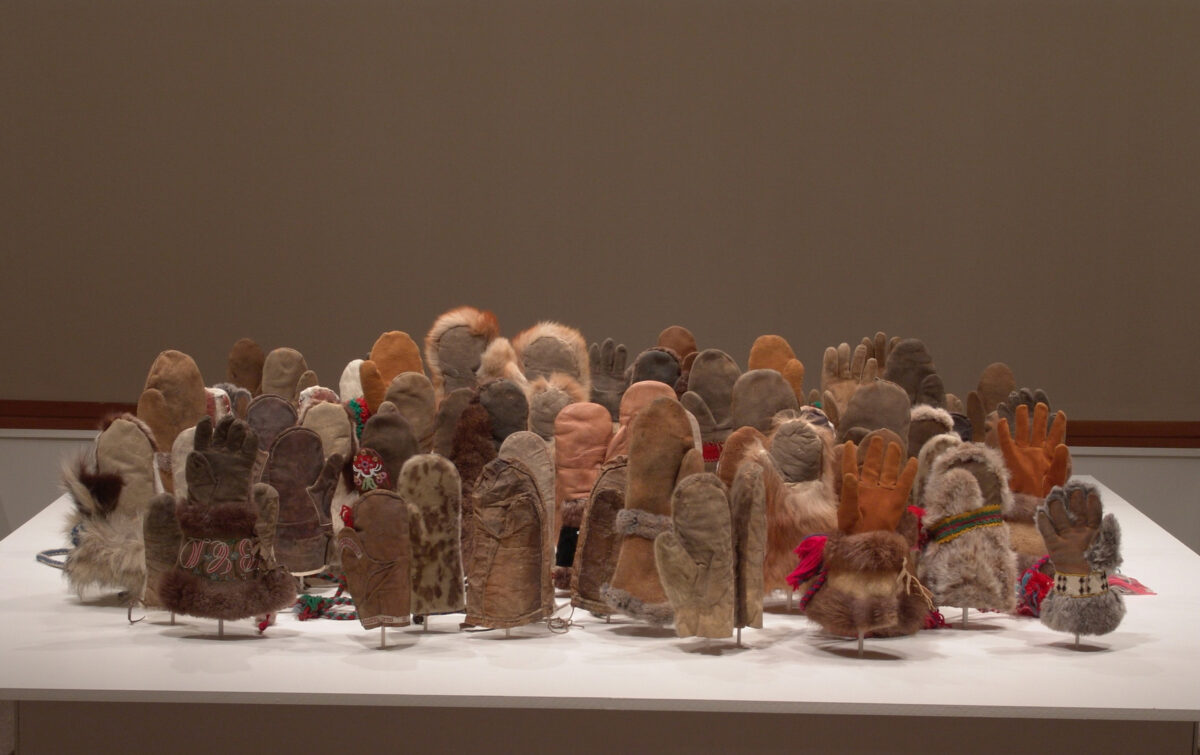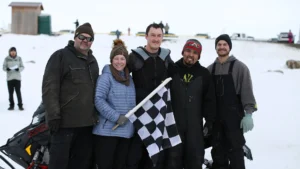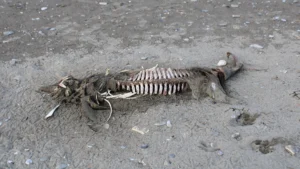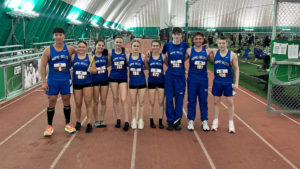The following KNOM Profile addresses the topic of suicide in Northwest Alaska and may be distressing to some listeners. If you feel you are in crisis, call the Alaska Careline at 1-877-266-4537.
52 pairs of gloves and mittens are clustered on a pedestal in the Yukon Arts Centre in Whitehorse, Canada.
“People come up to me afterwards and… They haven’t read the statement yet, but they know what it is, you know? … They might not know it’s specifically about suicide, but they know it’s about loss.”
Sonya Kelliher-Combs, from Nome and based in Anchorage, is the artist behind the exhibit, which she calls “Goodbye.” She says the exhibit’s goal is to open dialogue on a subject that is increasingly prevalent, but “often taboo” to talk about.
The age-adjusted suicide rate among Americans in 2017 was 14.0 deaths per 100,000. Almost double that and you get Alaska’s rate: 26.9 deaths per 100,000. Double that number and it equals the rate among Alaska Natives: 51.9 deaths per 100,000.
Kelliher-Combs says that for “Goodbye,” she chose to focus on that last statistic.
“A big issue within indigenous communities, in particular in the North in Alaska Native rural communities, is suicide. And so, ‘Goodbye’ is a piece that dialogues that… speaks to the huge epidemic of suicide in our rural communities.”
The gloves and mittens used in the art exhibit “Goodbye” are all handmade. Many are made with seal skin or furs; some are beaded.
“I think that there is memory and history that’s connected to everything that is made by hand… I feel like historically an object would be made to last for a long time, and would be passed from generation to generation, even my grandparents’ couch and their table and things like that. I think that these objects have a history and a memory that somebody’s hands have put into it… and not only that, but the materials they’re made from, and how they’re imbued with a kind of spirit. There’s an honesty to this material.”
Adding to that spirit is that each pair was loaned to the exhibit by an Alaskan or member of the local Whitehorse community. Kelliher-Combs says there’s a story behind each pair of mittens, even if it’s not immediately visible to the installation. Mary Bradshaw, the director of visual arts at the Yukon Arts Center, agrees.
“We’re borrowing their mittens over the summer. Everyone will get their mittens back in September, which is kind of right in time (laughs)… but it was a really lovely opportunity for our community to be involved, and I know we had a number of people who drove in their mits partly in memory of a family member.”
She says visiting “Goodbye” looks something like this:
“As you walk in the room itself, it’s quite quiet and kind of darkened otherwise. The lights are just on the mittens and the platform. You’re able to walk the whole way around, and as you walk to the back, you can see the back of the mittens… it’s quite something, you know, seeing these open palms as you walk in, and then as you go around, you kind of get to see the full beauty that’s been put into all of these mittens.”
Bradshaw says the message behind “Goodbye” extends to her corner of the far north.
“Canada’s north is also really affected by indigenous suicides… The Yukon doesn’t have the same statistics captured as Alaska; we actually found it very hard to see what the numbers would reflect in our territory… We have 52 and a half pairs… We added an extra pair knowing that these numbers, of course, are just kind of the tip of the iceberg of what was actually recorded and self-identified.”
Paired with the main exhibit is a series Sonya Kelliher-Combs has been doing for over ten years, “Idiot Strings.” She started the series years ago as a memorial to her three uncles who had taken their lives. “Idiot strings” are pieces of string that tether a pair of mittens or gloves together.
“At least, that’s what my mom called them when I was a kid, so you wouldn’t lose your mittens… There’s a piece that people can write a message, or a thought, or draw a picture, and then tether it to these ‘idiot strings’; you can tie it onto there. And at some point we’ll have a ceremony, or kind of transform those messages and let them go. Haven’t quite figured that part out yet, because this is the second place it’s gone to, this piece. So it continues to fill up with more messages.”
Mary Bradshaw says there’s been a flood of people sharing and connecting with the “Idiot Strings” part of the exhibit.
“I’ve had to refill the basket of Tyvek over and over because people are really taking the time to send a message.”
It’s messages like these that encourage the connection Kelliher-Combs aims to foster through the exhibit.
“The idea is it’s not just an individual, personal trauma, but it’s a collective trauma that we carry with us. And to bring to light, to open it up so that people don’t feel afraid to express and deal with, and discuss these kinds of historical traumas.”
She says she thinks the exhibit is helping to bring awareness to statistics around suicide, while opening a dialogue around the topic as well. She’s anticipating that conversation to continue at a fish processing workshop and lecture that will close out the exhibit on August 23-25.
“We’re making fish rawhide… and then, we will be beading it and making these little amulets, I call them ‘portable secrets.’”
Kelliher-Combs says participants can wear their “portable secrets” as a reminder of something or someone they’ve lost.
“I’d put a healing stone in there, or maybe your pet’s dog hair, or whatever you were heartbroken from, and you can have that with you and carry it with you.”
“Goodbye” is open to the public in Whitehorse, Canada, until Saturday, August 24.
If you feel you are in crisis, you may reach out 24 hours a day to the Alaska Careline at 1-877-266-4537. For local support on weekends or after Behavioral Health Services hours, contact the Norton Sound Regional Hospital Acute Care Unit at 907-443-6411, and ask for a BHS consultant.
Image at top: Sonya Kelliher-Combs’ exhibit “Goodbye” at the Anchorage Museum in 2007. Photo: Sonya Kelliher-Combs, used with permission.





